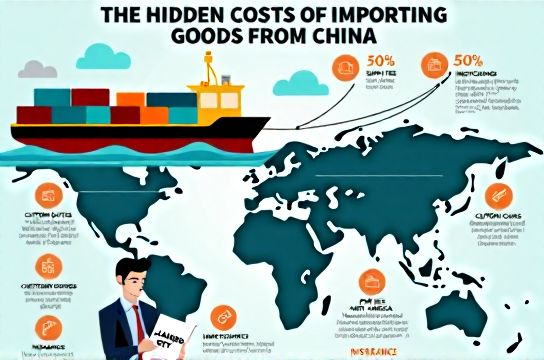Hidden Costs of Buying from China You Should Know
- 时间:
- 浏览:16
- 来源:OrientDeck
So you're thinking about sourcing products from China? Smart move. With competitive manufacturing, vast supply chains, and lightning-fast production cycles, it’s no wonder why businesses worldwide flock to Chinese suppliers. But here’s the catch — what you see on Alibaba or made-in-China.com isn’t always what you pay. Behind those tempting low prices lurk hidden costs that can blow your budget if you’re not careful.

The Real Price Tag: What’s Not on the Quote
When a supplier quotes $5 per unit, don’t pack the champagne just yet. That number rarely includes the full picture. Let’s break down the sneaky extras that often show up later.
- Shipping & Freight Charges: Ocean freight might seem cheap, but port fees, container loading, and last-mile delivery add up. Air freight? Faster, but way pricier — sometimes 3–5x more.
- Import Duties & Taxes: Depending on your country, tariffs can range from 5% to over 25%. The U.S., for example, slapped additional tariffs on many Chinese goods under Section 301.
- Customs Broker Fees: Most importers need a broker to clear goods. Expect to pay $100–$300 per shipment.
- Quality Control Inspections: Skipping QC? Risky. Hiring a third-party inspector runs $200–$500 per visit — but beats receiving 1,000 defective units.
- Product Certification & Compliance: CE, FCC, FDA — these aren’t free. Testing and certification can cost hundreds or thousands, depending on product type.
Breakdown of Hidden Costs (Per 1,000 Units)
| Cost Factor | Avg. Cost | Notes |
|---|---|---|
| Unit Price (Quoted) | $5,000 | 1,000 units @ $5 each |
| Ocean Freight (FCL) | $1,200 | 40ft container, Asia to USA West Coast |
| Import Duty (U.S.) | $750 | 15% tariff on category X goods |
| Customs Broker Fee | $200 | One-time charge |
| QC Inspection | $350 | Third-party service |
| Certification (e.g., FCC) | $800 | One-time setup |
| Total | $8,300 | vs. quoted $5,000 — 66% higher! |
Other Sneaky Surprises
Besides direct costs, consider these:
- Lead Time Delays: A delayed shipment means storage fees, missed sales, or rushed air freight (ouch).
- Communication Gaps: Misunderstandings due to language or time zones can lead to wrong specs, rework, or rejected batches.
- MOQ Pressures: Minimum Order Quantities force you to buy more than needed, tying up cash and inventory.
How to Avoid the Trap
Don’t panic — with planning, you can dodge most pitfalls.
- Get a landed cost quote: Ask suppliers to include shipping, insurance, and duties in their报价 (quotation).
- Use Incoterms wisely: Opt for DDP (Delivered Duty Paid) if you want all-in pricing — though rare, some suppliers offer it.
- Budget for compliance: Research your country’s import rules early.
- Inspect before shipping: Never skip QC. It saves money long-term.
Sourcing from China can still be a game-changer — just go in with eyes wide open. Know the real cost, plan ahead, and you’ll turn those hidden fees into manageable line items, not financial nightmares.